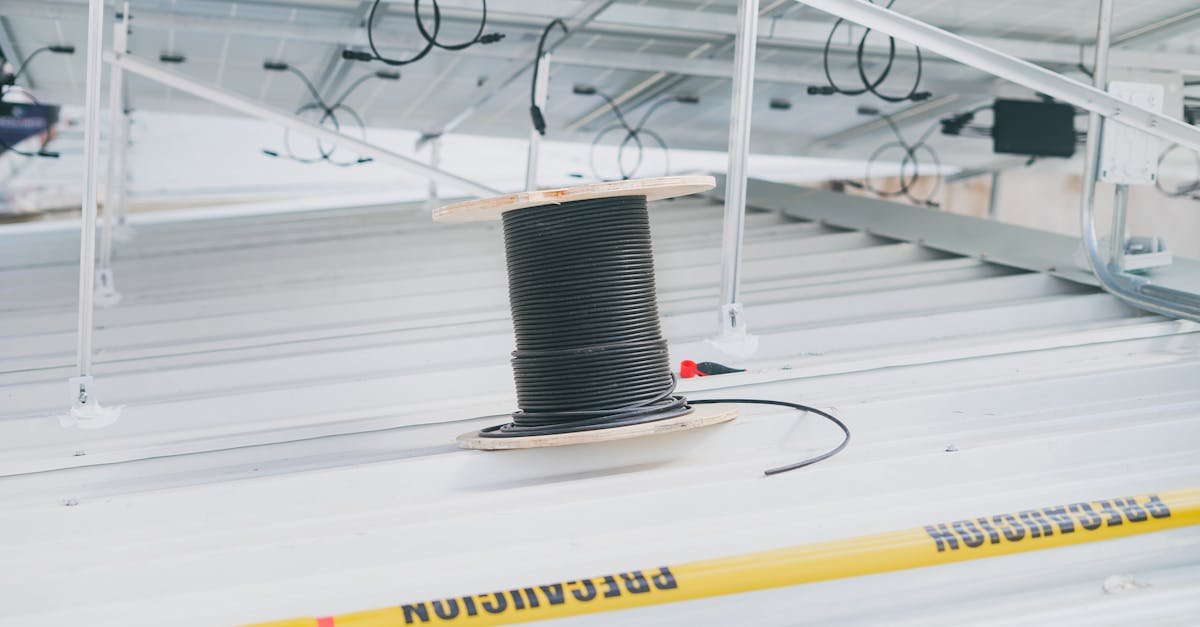Investing in a Greener Crypto Future: Your Guide to Energy Efficient Altcoins
Hey there! So, you’ve probably heard the buzz about cryptocurrencies, right? Bitcoin, Ethereum… maybe even Dogecoin thanks to all the hype. It’s an exciting world, full of potential and, let’s be honest, a bit of confusion. One thing that often comes up, and something I found myself thinking about a lot, is the energy thing. You hear stories about Bitcoin using as much electricity as a small country, and it makes you wonder, is this whole crypto thing really sustainable?
It’s a fair question. I remember first diving into crypto and being fascinated by the technology, but that environmental question mark kept nagging at me. But here’s the good news: the crypto world isn’t just one thing. It’s constantly evolving, and a big part of that evolution involves finding smarter, greener ways to do things. That’s where energy efficient altcoins come into the picture.
Think of “altcoins” as basically any cryptocurrency that isn’t Bitcoin. And within that vast universe of altcoins, there’s a growing number designed specifically to use way, way less energy. We’re talking about projects built on more sustainable foundations, often called “green cryptocurrency” or “eco friendly crypto.” Investing in these isn’t just about potentially growing your money; it’s about supporting a version of this technology that feels a bit more… well, responsible. It’s about backing innovation that considers its footprint. If you’re curious about how you can get involved, how you can potentially invest in a future where digital assets don’t cost the earth, then you’re in the right place. Let’s explore this together, breaking it down step by step, like sharing notes over coffee.
Why Bother with Energy Efficient Altcoins? Understanding the “Green” Crypto Movement
Okay, let’s get into the heart of it. Why should we even care about finding low energy crypto? Isn’t crypto just crypto? Well, not exactly. It really boils down to how these different digital currencies work under the hood, specifically how they agree on which transactions are legitimate.
You see, Bitcoin, the original gangster of crypto, uses a system called Proof of Work (PoW). Imagine a massive, global competition where powerful computers (called miners) race to solve incredibly complex math puzzles. The first one to solve the puzzle gets to add the next batch of transactions (a “block”) to the digital ledger (the “blockchain”) and earns some new Bitcoin as a reward. This process is what keeps the Bitcoin network secure and running without a central bank.
Now, here’s the catch: those math puzzles are *designed* to be incredibly difficult and require enormous amounts of computing power. Think of thousands upon thousands of specialized computers running flat out, 24/7, all competing for that prize. All that computing power guzzles electricity. We’re talking energy consumption comparable to entire countries like Argentina or Sweden. That’s the source of the environmental concern – the massive carbon footprint associated with traditional crypto mining.
It led to a lot of headlines, sparking debates about whether the benefits of this decentralized system outweighed its environmental cost. And honestly, it made a lot of people, including potential investors and developers, pause and think.
But the crypto world is full of smart people, and they saw this problem coming. They started asking: “Can we achieve the same security and decentralization without burning through mountains of energy?” The answer, it turns out, is a resounding yes! This led to the development of alternative ways to run a blockchain, often called different “consensus mechanisms.” The most popular and important one for our discussion is Proof of Stake (PoS).
Think of Proof of Stake this way: Instead of miners competing with raw computing power (Work), you have “validators” who “stake” their own coins. It’s like putting down a security deposit. These validators are chosen to propose and confirm new blocks of transactions based, in part, on how many coins they have staked. If they try to cheat the system, they risk losing their staked coins. It’s like having skin in the game.
Why is PoS so much more energy efficient? Because there’s no massive race to solve complex puzzles! Validators are chosen through algorithms, not brute computing force. The energy needed is dramatically lower – we’re talking potentially 99% less energy than Proof of Work. It’s like switching from thousands of gas guzzling muscle cars racing each other to a few efficient electric scooters delivering packages. Ethereum, the second biggest crypto, recently made a huge switch from PoW to PoS (called “The Merge”) specifically to address energy concerns.
PoS isn’t the only game in town for sustainable blockchain technology, though. There are other clever ideas:
- Proof of Authority (PoA): Here, transactions are validated by a set of pre approved, trusted authorities. Think of it like having a board of reputable notaries verifying documents. It’s efficient but can be less decentralized, as you rely on the reputation of those authorities.
- Proof of History (PoH): Used by projects like Solana, this involves creating a historical record that proves an event occurred at a specific moment in time, helping order transactions efficiently before they even need full consensus. It works alongside PoS to speed things up.
- Directed Acyclic Graphs (DAGs): Some projects don’t even use a traditional linear blockchain! DAGs are a different kind of data structure where transactions confirm previous ones, creating a web like structure. Think of it like gossip – information spreads and gets confirmed rapidly through the network. Projects like Hedera (Hashgraph) or IOTA use variations of this, often boasting high speed and low energy use.
So, the first big reason to care about these energy efficient altcoins is clear: they drastically reduce the environmental impact associated with blockchain technology. But the benefits don’t stop there. This efficiency often comes hand in hand with other improvements:
Faster and Cheaper Transactions: PoW blockchains like Bitcoin can sometimes be slow and expensive, especially when the network is busy. Many PoS and other efficient systems are designed to handle way more transactions per second (TPS) and often have much lower transaction fees. Think pennies, or even fractions of a penny, compared to potentially several dollars on older networks. This makes them much more practical for everyday uses, like micro payments, gaming, or decentralized social media.
Better Scalability: Scalability means how well a network can handle growth and increasing demand. Because efficient mechanisms don’t rely on energy intensive competition, they can often scale more easily to accommodate millions or even billions of users and transactions without grinding to a halt or becoming prohibitively expensive. This is crucial for real world adoption.
Attracting Developers and Businesses: Developers want to build applications on platforms that are fast, cheap, and scalable. Businesses looking to use blockchain technology are increasingly conscious of sustainability and public perception. Energy efficient blockchains offer an attractive alternative, making them hubs for innovation in areas like Decentralized Finance (DeFi), Non Fungible Tokens (NFTs), supply chain management, and more.
The Investment Angle (ESG Trends): Investors are paying more attention to ESG factors – Environmental, Social, and Governance. There’s a growing movement, especially among younger generations and institutions, to invest in companies and technologies that align with sustainable values. Eco friendly crypto investment fits right into this trend. Projects that are energy efficient might be seen as less risky from a regulatory standpoint (as governments worry about PoW’s energy use) and potentially have a better public image, which could attract more users and investment over the long term. Choosing sustainable crypto could be seen as betting on the future direction of the industry.
Aligning with Personal Values: For many of us, myself included, there’s a simple satisfaction in knowing your investments aren’t actively contributing to a problem you care about. If environmental sustainability matters to you, investing in green cryptocurrency allows you to participate in the crypto space without that ethical conflict. It feels good to support projects genuinely trying to build a better, more efficient digital future.
Think about popular projects built on these principles: Cardano (ADA) was built from the ground up with a research driven approach to PoS. Solana (SOL) focuses on high speed using PoH and PoS. Polkadot (DOT) connects different blockchains (parachains) using a nominated PoS system. Algorand (ALGO) uses a variation called Pure Proof of Stake. These are just a few examples, and they all achieved prominence partly because they offered a more sustainable and scalable vision compared to early blockchains.
Let’s dig a bit deeper into staking, as it’s central to many efficient coins. When you stake your coins, you’re essentially locking them up in a specific wallet or smart contract to help secure the network. In return for doing this service and taking on the risk (your coins are locked and potentially subject to penalties called “slashing” if the validator you choose misbehaves), you earn rewards, usually in the form of more coins. It’s often compared to earning interest in a savings account, but instead of just sitting there, your capital is actively helping run the network. Many platforms make this easy through “delegation,” where you assign your stake to a professional validator who runs the technical side, and you share in the rewards. The Annual Percentage Yield (APY) can vary quite a bit depending on the coin and network conditions, but it provides a way to potentially grow your holdings while supporting a network you believe in.
Of course, it’s important to have a balanced view. While PoS and other alternatives are vastly more energy efficient, some critics argue about their security assumptions or potential for centralization compared to the sheer distributed power of Bitcoin’s PoW (though PoW mining itself has become quite centralized in large pools). These are ongoing debates within the crypto community. However, the trend is undeniable: the vast majority of new blockchain development is happening on energy efficient platforms, and even established players like Ethereum have made the switch. The industry clearly sees efficiency as the path forward.
So, bothering with energy efficient altcoins isn’t just about being “green.” It’s about understanding where the technology is likely heading, embracing potentially faster and cheaper systems, and aligning your participation in this exciting digital asset space with broader considerations about sustainability and responsible innovation. It’s about investing in what might be the next evolution of the internet itself, built on more sustainable foundations.
Finding Your Green Gems: How to Research Energy Efficient Altcoins
Alright, so you’re convinced that exploring energy efficient altcoins is worthwhile. Awesome! But now comes the big question: how do you actually find these “green gems” and figure out which ones might be good candidates for your attention, maybe even your investment? The crypto space is vast and noisy, with thousands of projects vying for attention. It’s easy to get lost or, worse, fall for hype without substance. This is where doing your own research – often called “DYOR” in the crypto world – becomes absolutely crucial. Think of it like being a detective, piecing together clues to understand if a project is the real deal.
So, where do you even begin your search for sustainable crypto? Good starting points are crypto data aggregator websites like CoinMarketCap or CoinGecko. These sites list thousands of cryptocurrencies and provide basic information. While they might not have a simple “eco friendly” filter that’s perfectly accurate (as defining and verifying this is complex), they often list the consensus mechanism. Look for terms like Proof of Stake (PoS), Delegated Proof of Stake (DPoS), Proof of Authority (PoA), or sometimes mentions of DAGs. This is your first clue. However, don’t stop there! These sites are just starting points for discovery.
The most important resources are the project’s official website and its whitepaper. The website should give you a clear overview of the project’s goals and technology. The whitepaper is usually a more technical document outlining the problem the project aims to solve, its proposed solution (including the technology and consensus mechanism), and details about the coin itself (tokenomics). Yes, whitepapers can sometimes be dense, but reading at least the introduction, the problem/solution sections, and the tokenomics part is vital. Look for clear explanations, not just buzzwords.
Now, let’s break down the key factors you need to dig into when researching a potential eco friendly crypto investment:
-
Verify the Consensus Mechanism: This is step one for finding an energy efficient coin. Does the whitepaper or official documentation explicitly state it uses PoS, PoA, PoH, DAG, or another non PoW mechanism? Don’t just trust a random blog post or tweet. Go to the source. Understand how their specific implementation works. Is it a standard PoS, or a unique variation? This tells you about its fundamental energy profile.
-
Understand the Project’s Mission and Use Case: What problem is this blockchain technology actually trying to solve? Is it aiming to be a faster payment system, a platform for decentralized applications (dApps), a solution for supply chain tracking, a specific niche like decentralized storage or identity verification? A coin needs a purpose beyond just existing. Does the use case seem valuable and achievable? Does the project have any real world partnerships or pilot programs demonstrating its utility? A super efficient blockchain solving a non existent problem isn’t a great investment.
-
Examine the Technology and Development Activity: Is the underlying tech sound? Is it innovative, or just a copycat? Crucially, is the development team actively working on the project? You can often check this by looking at the project’s GitHub repository (where the code is usually stored publicly). Are there recent updates (“commits”)? Is the team hitting milestones on their roadmap? Active development is a sign of a living, breathing project. Also, look for information on the network’s actual performance – transactions per second (TPS), transaction finality time, and any available data (even estimates) on its energy consumption per transaction compared to benchmarks like Visa or older blockchains. Some projects focused on sustainability might publish reports from organizations like the Crypto Carbon Ratings Institute (CCRI) – look for these third party validations.
-
Investigate the Team and Community: Who are the people behind the project? Do they have relevant experience in blockchain, software development, cryptography, or business? Are their identities public and verifiable (e.g., LinkedIn profiles)? Anonymous teams can be a red flag, although some legitimate projects have pseudonymous founders. Transparency is key. Beyond the core team, look at the community. Is there an active, engaged, and supportive community on platforms like Discord, Telegram, Twitter, or Reddit? A strong community can be a powerful asset for adoption and network effects. But beware of communities that are purely focused on price hype (“moon talk”) rather than discussing the technology and its development.
-
Analyze the Tokenomics: This refers to the economics of the cryptocurrency token itself. It’s super important! You need to understand:
- Total Supply: Is there a maximum number of coins that will ever exist (like Bitcoin’s 21 million), or is it inflationary (new coins are created over time)?
- Circulating Supply: How many coins are currently available on the market?
- Distribution: How were the initial coins distributed? Was there a fair launch, or did early investors and the team get a huge chunk (which they might sell later, putting downward pressure on the price)?
- Inflation/Deflation: If new coins are created (e.g., through staking rewards), what’s the rate? Is there any mechanism to remove coins from circulation (“burning”)? High inflation can devalue existing holdings.
- Utility: What is the coin actually used for within its ecosystem? Is it needed to pay transaction fees, participate in governance (voting on proposals), staking, or access specific services? A coin with strong utility has intrinsic demand.
- Staking Details: If it’s a PoS coin, what are the staking rewards (APY)? Are there lock up periods? What are the risks (slashing)?
Understanding tokenomics helps you assess the potential long term value and sustainability of the coin as an asset.
-
Consider Market Metrics (Carefully): Look at the coin’s market capitalization (total value of all circulating coins), trading volume (how much is bought and sold daily), and price history. These numbers give you context about its current size and liquidity in the cryptocurrency market. However, don’t make decisions based solely on price charts or chasing pumps. Past performance is not indicative of future results, especially in the volatile crypto world. Focus on the fundamentals first.
-
Check Exchange Listings: Is the coin listed on major, reputable crypto exchanges? While not a guarantee of quality, getting listed on top exchanges often involves some level of vetting by the exchange regarding the project’s legitimacy and security. It also makes the coin easier to buy and sell.
Tools and Resources to Help Your Research:
- Primary Sources: Project Official Website, Whitepaper, Official Blog/Announcements, Developer Documentation. Always start here!
- Data Aggregators: CoinMarketCap, CoinGecko, Messari (often has more in depth research). Use them for initial discovery and tracking market data.
- Reputable Crypto News Outlets: CoinDesk, Cointelegraph, The Block, Decrypt. Good for staying updated on industry news and project developments, but be critical of sponsored content or biased reporting.
- Blockchain Explorers: Tools like Etherscan (for Ethereum and compatible chains), Solscan (for Solana), Cardanoscan (for Cardano), etc. allow you to see real time transactions, wallet balances, and network activity. This provides transparency.
- Community Channels: Project specific Discord, Telegram, Reddit forums. Engage, ask questions (thoughtful ones!), gauge community sentiment, but be wary of echo chambers and hype.
- Independent Research & Analysis: Look for reports from crypto research firms (like Messari Pro, Delphi Digital – often paid) or sustainability focused analysts (like CCRI). University research papers sometimes cover specific blockchain protocols too.
A Word on Avoiding Scams and “Greenwashing”:
Because “eco friendly” is a desirable label, some less scrupulous projects might try to slap it on without real substance – this is called “greenwashing.” Be critical. Does the project truly use an efficient mechanism? Do they provide any data or evidence? Are their claims realistic? Be wary of:
- Guarantees of high returns (major red flag in any investment).
- Excessive hype and marketing buzzwords with little technical detail.
- Pressure to buy quickly (“Fear Of Missing Out” or FOMO tactics).
- Anonymous teams with no track record.
- Vague or non existent whitepapers or roadmaps.
Always prioritize due diligence over hype. If something seems too good to be true, it probably is. The goal is to make an informed decision based on solid research, not to chase the next hot trend blindly.
Imagine you’re looking into a hypothetical coin, “EcoCoin.” You’d start at their website, confirm they claim to use Proof of Stake. You’d download their whitepaper, reading about their goal (e.g., decentralized carbon credit tracking). You’d check their GitHub – are developers active? You’d look up the team on LinkedIn – do they have relevant backgrounds? You’d join their Discord – is the conversation focused on development and adoption, or just price? You’d check CoinGecko for its tokenomics – what’s the supply, how is it used? You’d search for any independent reports on its energy use. Only after gathering all these pieces of the puzzle can you start to form a reasoned opinion about EcoCoin’s potential as a sustainable and viable project.
Research takes time and effort, there’s no shortcut. But by following these steps, you dramatically increase your chances of identifying promising, genuinely energy efficient altcoins and avoiding costly mistakes. It’s about being curious, critical, and thorough.
Making the Investment: Practical Steps and Considerations
Okay, you’ve done your homework. You’ve researched a few energy efficient altcoins, analyzed their technology, team, tokenomics, and you feel confident about one or two projects that align with both your investment goals and your desire for a more sustainable crypto future. Now what? How do you actually go about investing? Let’s walk through the practical steps, keeping things straightforward, along with some important things to keep in mind.
Getting Set Up: Exchanges and Wallets
First things first, you’ll need a way to buy these altcoins. This usually happens on a crypto exchange. Think of exchanges as marketplaces where people buy and sell different cryptocurrencies.
- Choosing an Exchange: There are many exchanges out there, ranging from beginner friendly ones like Coinbase to platforms with a wider variety of altcoins like Binance, Kraken, or KuCoin. When choosing, consider:
- Availability: Does the exchange actually list the specific energy efficient altcoin(s) you want to buy? Not all coins are on all exchanges.
- Fees: How much does the exchange charge for deposits, withdrawals, and trades? Fees can eat into your returns.
- Security: Does the exchange have a good security track record? Do they offer features like Two Factor Authentication (2FA)? Look for established, reputable platforms.
- Ease of Use: Is the platform intuitive and easy to navigate, especially if you’re new?
- Regulation: Is the exchange compliant with regulations in your country? This often involves a Know Your Customer (KYC) process, where you’ll need to provide identification to verify who you are.
- Setting Up a Wallet: Once you buy crypto on an exchange, you have a choice. You can leave it on the exchange (sometimes called an “exchange wallet” or “custodial wallet”), which is convenient for trading. However, the exchange technically controls the private keys to those coins. The saying goes: “Not your keys, not your coins.” For better security and control, especially for long term holding or staking, you’ll want a personal wallet (a “non custodial wallet”).
- Hot Wallets: These are software wallets connected to the internet (e.g., mobile apps like Trust Wallet or Exodus, browser extensions like MetaMask or Phantom). They are convenient for frequent use but slightly less secure due to the internet connection.
- Cold Wallets: These are hardware devices (like Ledger or Trezor) that store your private keys offline. They offer the highest level of security for storing significant amounts of crypto long term but are less convenient for quick transactions.
When you set up a personal wallet, you’ll be given a secret “seed phrase” or “recovery phrase” (usually 12 or 24 words). Guard this phrase with your life! Write it down offline, store it securely in multiple places, and never share it with anyone or enter it on a website. Anyone with your seed phrase can access your funds. For staking specific PoS coins, you’ll often need a wallet compatible with that particular blockchain (e.g., Yoroi or Daedalus for Cardano, Phantom or Solflare for Solana).
The Buying Process
Once your exchange account is set up and verified (KYC complete), the process is usually quite simple:
- Fund Your Account: Deposit traditional currency (like USD, EUR, GBP) into your exchange account using methods like a bank transfer (ACH, SEPA), debit card, or wire transfer. Some methods are faster or cheaper than others.
- Find the Altcoin: Navigate the exchange’s trading section and search for the ticker symbol of the energy efficient altcoin you want to buy (e.g., ADA for Cardano, SOL for Solana, ALGO for Algorand).
- Place an Order: You’ll typically have options like:
- Market Order: Buys the coin immediately at the best available current market price. Simple, but the price might shift slightly before the order fills.
- Limit Order: Allows you to set a specific price at which you’re willing to buy. Your order will only execute if the market price reaches your specified limit price or better. Gives you more control over the entry price.
Enter the amount you want to buy (either in traditional currency or number of coins) and confirm the transaction.
- Withdraw (Optional but Recommended for Holding): Once the purchase is complete, if you plan to hold long term or stake, consider withdrawing the coins from the exchange to your secure personal wallet. Follow the exchange’s withdrawal process, carefully entering your personal wallet’s receiving address. Double check the address! Sending crypto to the wrong address usually means it’s lost forever.
Investment Strategies for Altcoins
Okay, you know how to buy, but when and how much should you buy? Here are a few common approaches to consider as part of your investment strategy:
- Dollar Cost Averaging (DCA): This involves investing a fixed amount of money at regular intervals (e.g., $50 every week or $200 every month), regardless of the coin’s price. It helps average out your purchase price over time, reducing the risk of buying everything at a peak. It’s a disciplined approach, great for long term investors who want to avoid trying to “time the market.”
- Lump Sum Investing: Investing a larger amount all at once. If you happen to time it perfectly near a bottom, your potential gains could be higher. However, the risk is also higher – if you buy near a top, it could take a long time to recover.
- Diversification: This is a fundamental principle of investing. Don’t put all your capital into a single altcoin, no matter how promising it seems. Spread your investment across several different energy efficient altcoins with different use cases, teams, and technologies. Maybe even diversify across different sectors within crypto (DeFi, NFTs, infrastructure) and potentially other asset classes entirely (like stocks or bonds, depending on your overall financial plan). Diversification helps reduce the impact if one particular investment performs poorly.
- Long Term Holding (HODL): Many people investing in crypto, especially in projects with strong fundamentals like many sustainable ones aim to have, adopt a long term perspective. They buy and hold (“HODL” is crypto slang for hold) through market ups and downs, believing in the project’s future value. This requires patience and conviction in your research.
- Staking for Passive Income: As we discussed, if you hold PoS coins, staking is a fantastic way to potentially earn passive income while supporting the network’s security and efficiency. Research how to stake the specific coins you hold – usually, it involves using a compatible wallet and choosing a reliable validator or staking pool to delegate your coins to. Understand the rewards (APY), any lock up periods (times you can’t access your coins), and the risks (like slashing, where validators are penalized for bad behavior, potentially impacting your rewards or stake). Staking aligns perfectly with a long term HODL strategy for many green cryptocurrency projects.
Crucial Consideration: Risk Management
I cannot stress this enough: Investing in cryptocurrencies, including energy efficient altcoins, is risky. The market is known for its extreme volatility. Please keep these risks in mind:
- Volatility Risk: Prices can swing dramatically—up or down—in very short periods. It’s not uncommon to see double digit percentage changes in a single day. Never invest more money than you can afford to lose. Seriously. Don’t invest your rent money or emergency fund.
- Project Risk: Many crypto projects are still experimental. The technology might encounter unforeseen issues, the team might fail to deliver on its promises, adoption might not materialize, or a competitor might emerge with a better solution. Even promising projects can fail.
- Regulatory Risk: Governments worldwide are still developing regulations for cryptocurrencies. New rules or restrictions could impact the price, usability, or even legality of certain coins or activities like staking. While sustainable crypto might face less negative scrutiny, regulatory uncertainty affects the entire market.
- Security Risk: Exchanges can get hacked, personal wallets can be compromised if you’re not careful with your seed phrase or device security, and smart contracts (used in DeFi and staking) can have vulnerabilities exploited by hackers. Always use strong, unique passwords, enable 2FA everywhere possible, and practice meticulous security hygiene with your wallets and keys.
Tracking and Taxes
Once you’ve invested, you’ll want to keep track of how your investments are doing. Many portfolio tracking apps and websites (including features within CoinMarketCap and CoinGecko) allow you to input your transactions and monitor your portfolio’s value. Try not to check obsessively, though – focus on your long term strategy.
Lastly, remember taxes. In most countries, profits made from selling, trading, or even sometimes spending crypto are considered taxable events (like capital gains). Earning staking rewards is often treated as income. Tax rules for crypto can be complex and vary by location. It’s wise to keep good records of your transactions and consult with a qualified tax professional who understands cryptocurrency.
Making an investment in energy efficient altcoins involves more than just clicking “buy.” It requires setting up securely, choosing a strategy that fits your goals and risk tolerance, understanding and mitigating the inherent risks, and being prepared for the practicalities like tracking and taxes. It’s an active process, but by approaching it thoughtfully and carefully, you can navigate the journey more confidently.
Wrapping Up: Investing Sustainably in the Future of Digital Assets
So, we’ve taken quite a journey together, exploring the world of energy efficient altcoins. We started by acknowledging the valid environmental concerns surrounding traditional cryptocurrencies like Bitcoin, fueled by their energy hungry Proof of Work systems. But we quickly saw that the story doesn’t end there. Innovation within the blockchain technology space has led to fantastic alternatives like Proof of Stake (PoS) and other clever consensus mechanisms, paving the way for a much greener, more sustainable crypto ecosystem.
We dove into why these efficient alternatives matter – not just for reducing the carbon footprint, but also for enabling faster, cheaper transactions, better scalability, and attracting developers building the next generation of decentralized applications. We discussed how investing in these eco friendly crypto investment options aligns with global ESG trends and allows you to potentially grow your assets while supporting technology you believe in.
Then, we rolled up our sleeves and got practical. We outlined a clear research process for identifying promising low energy crypto projects, emphasizing the need to look beyond the hype and dig into the consensus mechanism, use case, technology, team, and tokenomics. Remember, thorough due diligence (DYOR) is your best friend in this space. Finally, we walked through the steps of actually making an investment – choosing exchanges and wallets securely, understanding different buying strategies like DCA and staking, and crucially, being aware of and managing the inherent risks involved in the volatile cryptocurrency market.
Investing in energy efficient altcoins presents a unique opportunity. It’s a chance to participate in the cutting edge world of digital assets while consciously choosing projects that are building towards a more sustainable and scalable future. It’s about recognizing that innovation doesn’t have to come at an unacceptable environmental cost. By focusing on projects using PoS or other efficient methods, you’re supporting a positive evolution in the crypto space.
The journey into crypto investing, especially in newer altcoins, requires curiosity, patience, and a commitment to continuous learning. The landscape is always changing, but the principles of careful research, strategic planning, and risk management remain constant. Don’t feel pressured to jump in blindly. Take your time, learn at your own pace, and make informed decisions that feel right for you.
Ready to explore the world of green crypto further? Why not take the first step today? Start by researching one energy efficient project that catches your eye using the steps we discussed in the research section. Look into its consensus mechanism, its mission, and its team. What do you find interesting? What questions do you still have? Feel free to share your thoughts or findings in the comments below – let’s learn together!









